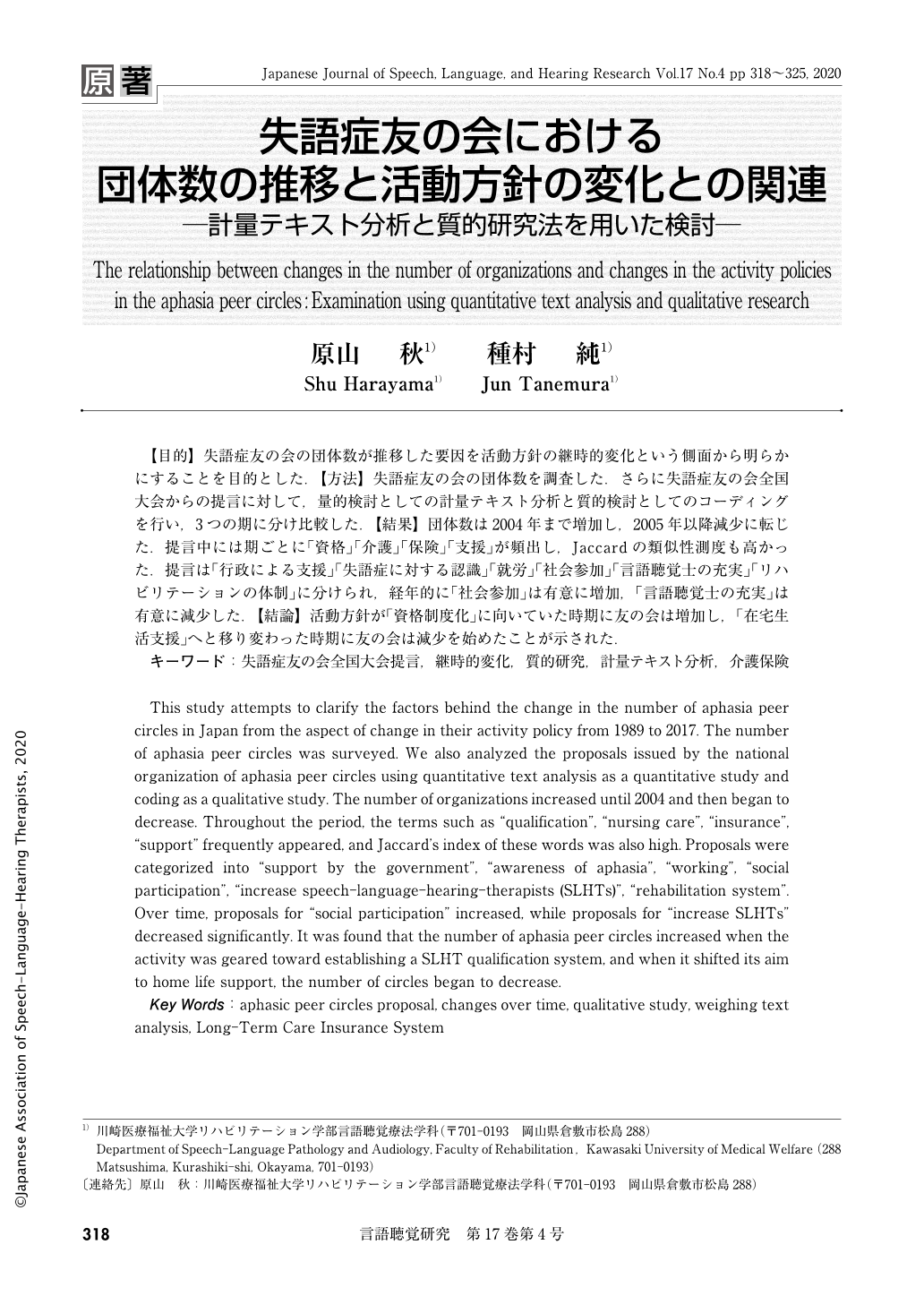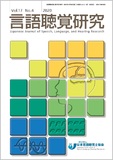Japanese
English
- 有料閲覧
- Abstract 文献概要
- 1ページ目 Look Inside
- 参考文献 Reference
【目的】失語症友の会の団体数が推移した要因を活動方針の継時的変化という側面から明らかにすることを目的とした.【方法】失語症友の会の団体数を調査した.さらに失語症友の会全国大会からの提言に対して,量的検討としての計量テキスト分析と質的検討としてのコーディングを行い,3つの期に分け比較した.【結果】団体数は2004年まで増加し,2005年以降減少に転じた.提言中には期ごとに「資格」「介護」「保険」「支援」が頻出し,Jaccardの類似性測度も高かった.提言は「行政による支援」「失語症に対する認識」「就労」「社会参加」「言語聴覚士の充実」「リハビリテーションの体制」に分けられ,経年的に「社会参加」は有意に増加,「言語聴覚士の充実」は有意に減少した.【結論】活動方針が「資格制度化」に向いていた時期に友の会は増加し,「在宅生活支援」へと移り変わった時期に友の会は減少を始めたことが示された.
This study attempts to clarify the factors behind the change in the number of aphasia peer circles in Japan from the aspect of change in their activity policy from 1989 to 2017. The number of aphasia peer circles was surveyed. We also analyzed the proposals issued by the national organization of aphasia peer circles using quantitative text analysis as a quantitative study and coding as a qualitative study. The number of organizations increased until 2004 and then began to decrease. Throughout the period, the terms such as “qualification”, “nursing care”, “insurance”, “support” frequently appeared, and Jaccard's index of these words was also high. Proposals were categorized into “support by the government”, “awareness of aphasia”, “working”, “social participation”, “increase speech-language-hearing-therapists (SLHTs)”, “rehabilitation system”. Over time, proposals for “social participation” increased, while proposals for “increase SLHTs” decreased significantly. It was found that the number of aphasia peer circles increased when the activity was geared toward establishing a SLHT qualification system, and when it shifted its aim to home life support, the number of circles began to decrease.

Copyright © 2020, Japanese Association of Speech-Language-Hearing Therapists. All rights reserved.


